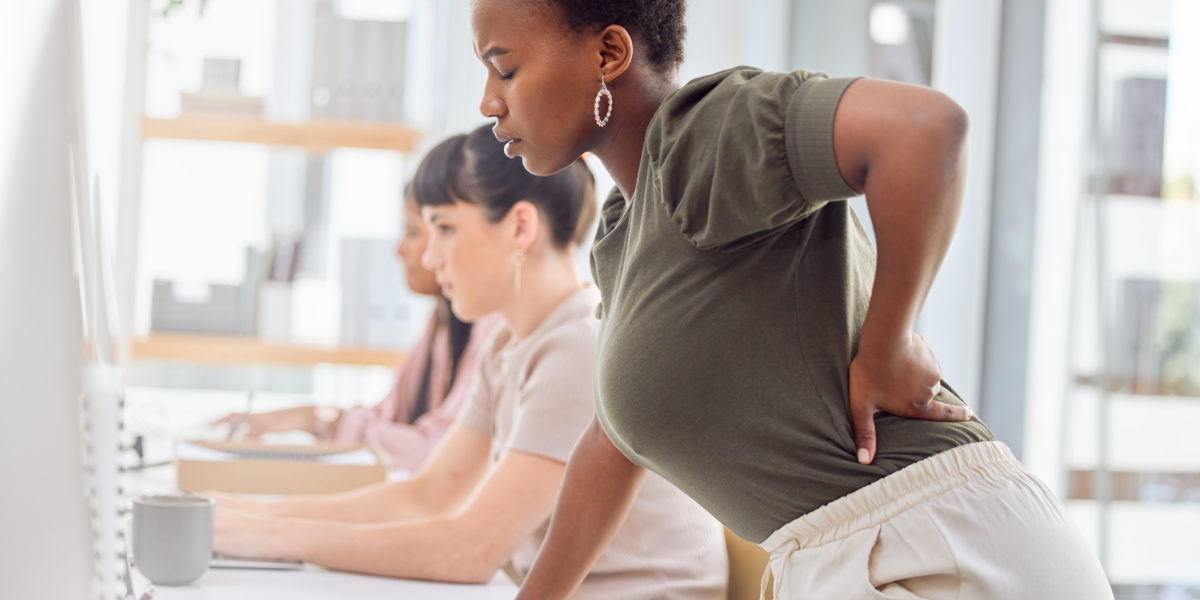The Low-Down on Low Back Pain
Get the facts about this common condition

What are some myths about low back pain?
Myth: “I need to rest my back when I have back pain.”
Fact: Staying active won’t hurt you. It may help you get better faster.
Myth: “I need prescription pain medicine.”
Fact: It’s best to try to let time and being active heal your back. Opioid pain medicines—such as hydrocodone or oxycodone—usually don’t work any better than over-the-counter medicines like ibuprofen or naproxen. And opioids can cause serious problems like opioid use disorder or overdose. Moderate to severe opioid use disorder is sometimes called addiction.
Myth: “I need a test like an X-ray or an MRI to diagnose my low back pain.”
Fact: Getting a test right away won’t help you get better faster. And it could lead you down a treatment path you may not need, since most people get better on their own, often with the help of physical therapy.
What causes low back pain?
In most cases, there isn’t a clear cause. This can be frustrating, because your back hurts and there’s no obvious reason. Your back pain can be caused by:
- Overuse or muscle strain: This can happen from playing sports, lifting heavy things, or not being physically fit.
- A herniated disc: This is a problem with the cushion between the bones in your back.
- Arthritis: With age, you may have changes in your bones that can narrow the space around your nerves.
- Other causes: In rare cases, the cause is a serious illness like an infection or cancer. But there are usually other symptoms too.
What are the symptoms?
Back pain can come on quickly or over time. You may feel:
- Pain in your hips or buttocks.
- Leg pain, numbness, tingling, or weakness. When a nerve gets squeezed—such as from a disc problem or arthritis—you may have symptoms in your leg or foot. You can even have leg symptoms from a back problem without having any pain in your back.
- Pain that’s sharp or dull, sometimes with stiffness or muscle spasms. It may be in one small area or over a broad area. But even bad pain doesn’t mean that it’s caused by something serious.
How is low back pain diagnosed?
A physical exam is the main way to diagnose low back pain. Your doctor may examine your back, check your nerves by testing your reflexes, and make sure that your muscles are strong. Your doctor also will ask questions about your back and overall health.
Most people don’t need any tests right away. Tests often don’t show the reason for your pain.
If your pain lasts more than six weeks or you have symptoms that your doctor is more concerned about, then your doctor may order tests. These may include an X-ray, a CT scan, or an MRI. Sometimes other tests such as a bone scan or nerve conduction test may be done.
How is low back pain treated?
Most acute low back pain gets better on its own within a few weeks, no matter what the cause. Time and doing usual activities are all that most people need to feel better.
Using heat or ice and taking over-the-counter pain medicine also can help while your body heals.
If you aren’t getting better on your own or your pain is very bad, your doctor may recommend:
- Physical therapy.
- Spinal manipulation, such as by a chiropractor.
- Acupuncture.
- Massage.
- Injections of steroid medicine in your back (especially for pain that involves your legs).
If you have chronic low back pain, treatment will help you understand and manage your pain. Treatment may include:
- Staying active. This may include walking or doing back exercises.
- Physical therapy.
- Medicines.
- Pain management. Your doctor may have you see a pain specialist.
- Counseling. Having chronic pain can be hard. It may help to talk to someone who can help you cope with your pain.
Most people don’t need surgery. But it may help some types of low back pain.
Follow-up care is a key part of your treatment and safety. Be sure to make and go to all appointments, and call your doctor if you are having problems. It’s also a good idea to know your test results and keep a list of the medicines you take.
When should you call for help?
Call 911 anytime you think you may need emergency care. For example, call if:
- You can’t move a leg at all.
Call your doctor now or seek immediate medical care if:
- You have new or worse symptoms in your legs, belly or buttocks. Symptoms may include:
- Numbness or tingling.
- Weakness.
- Pain.
- You lose bladder or bowel control.
Watch closely for changes in your health, and be sure to contact your doctor if:
- Along with the back pain, you have a fever, lose weight or don’t feel well.
- You do not get better as expected.


